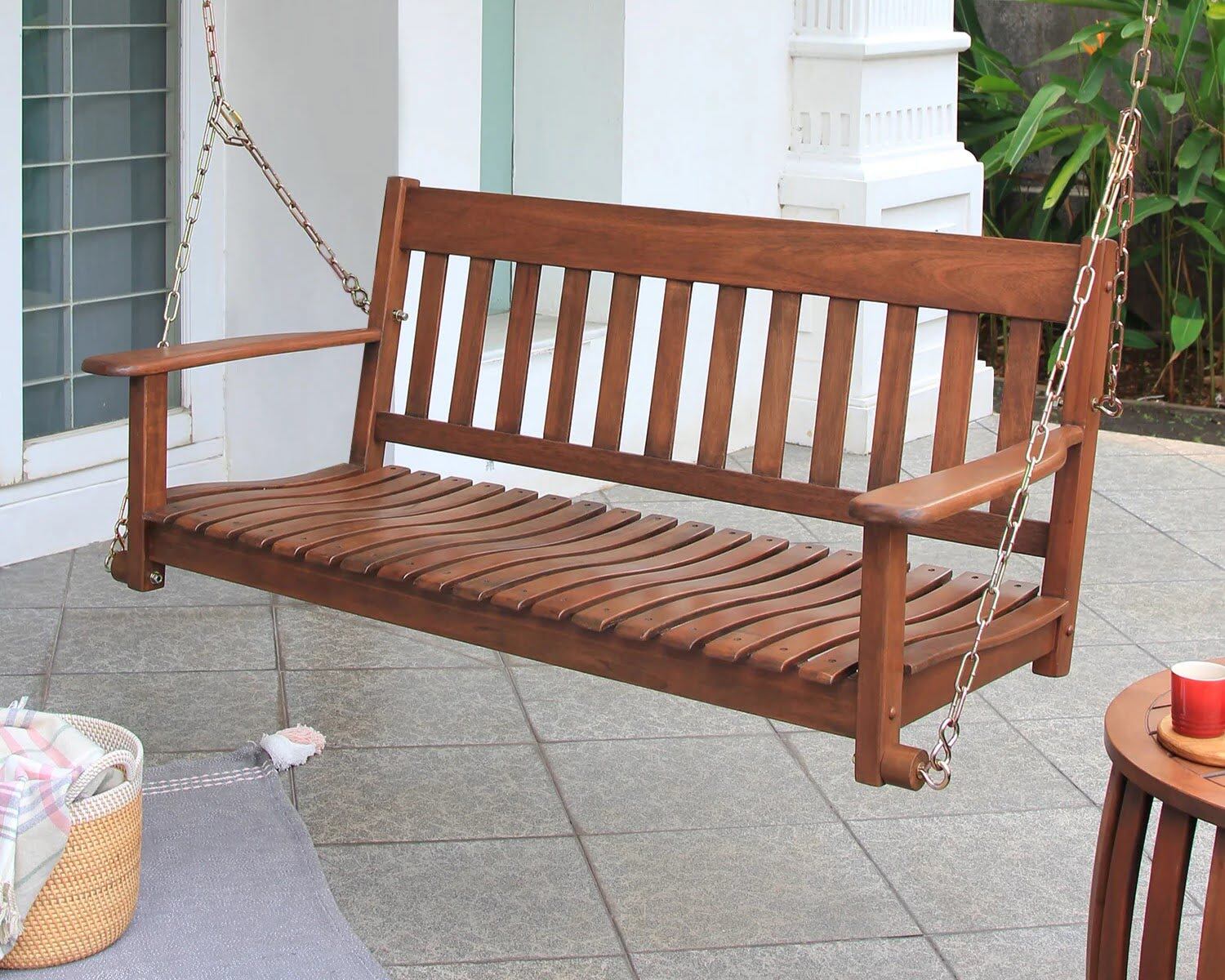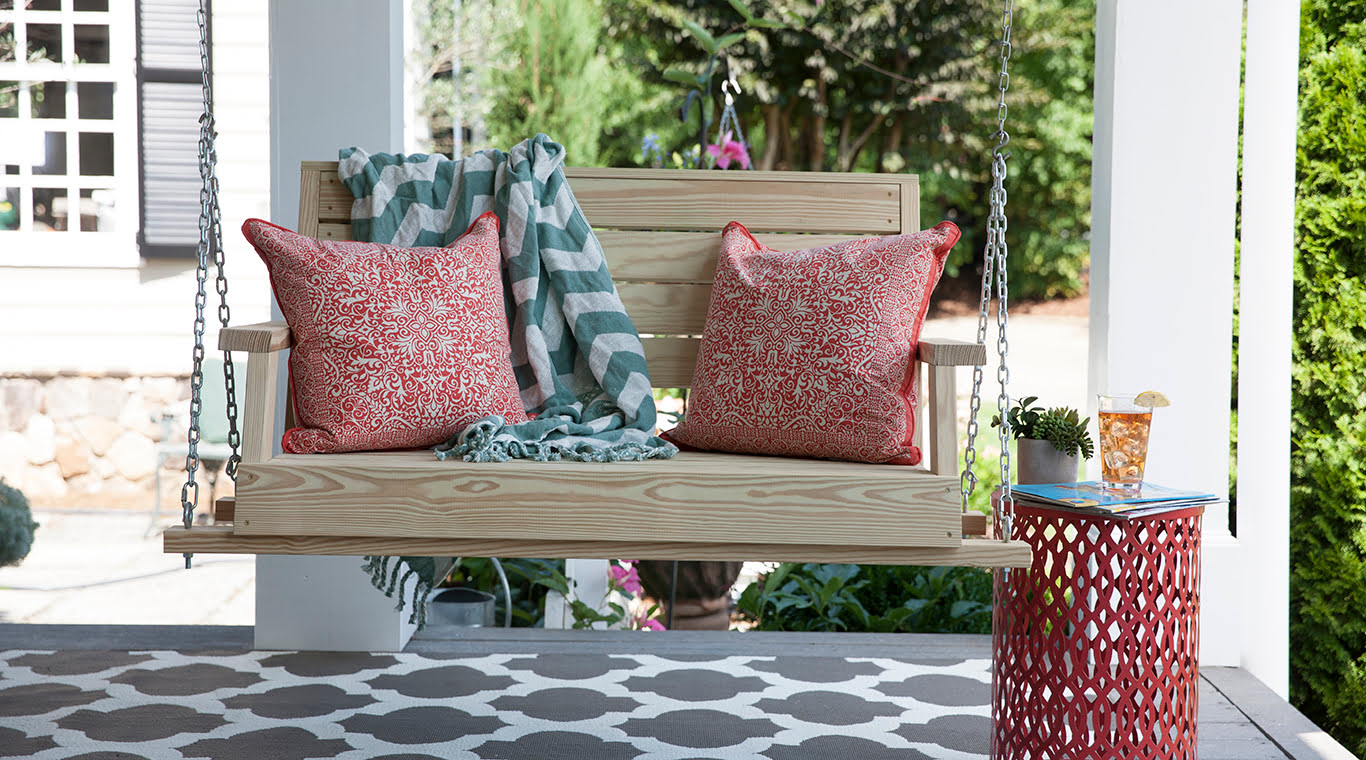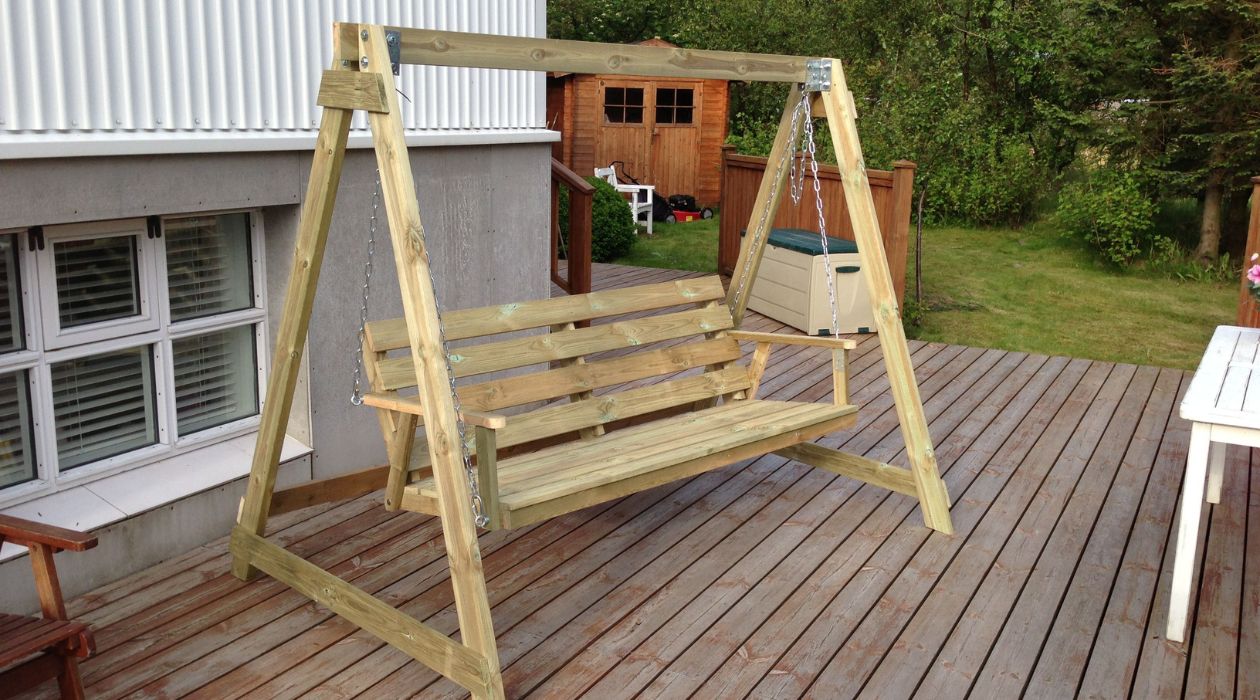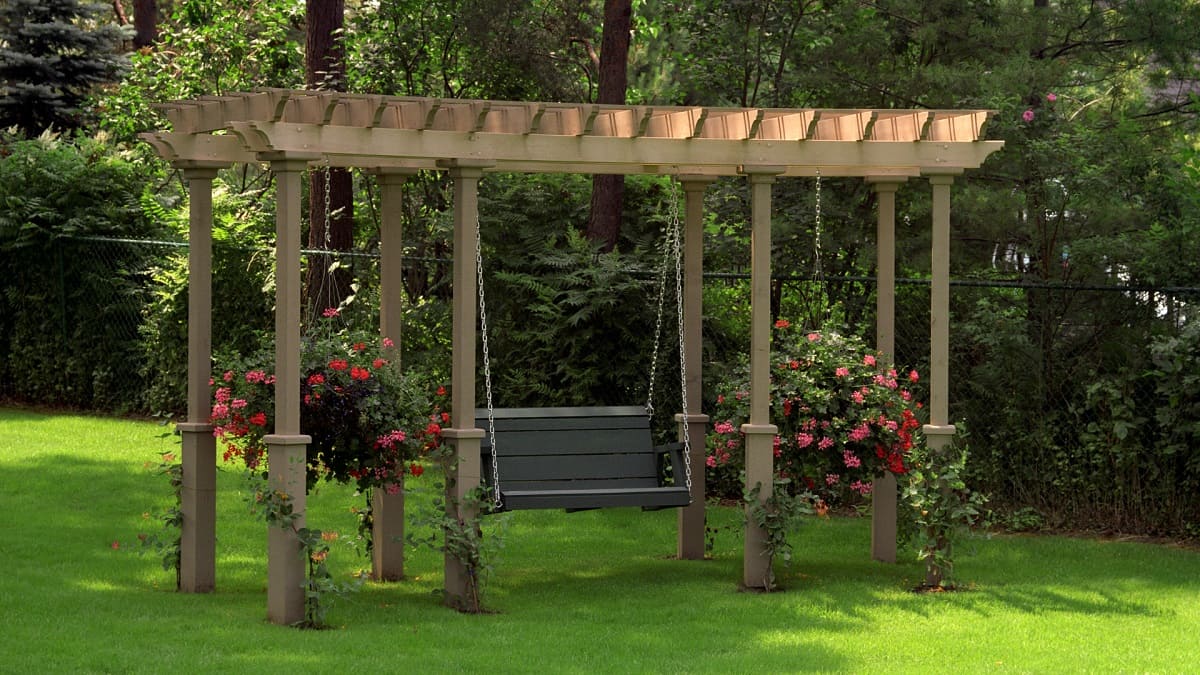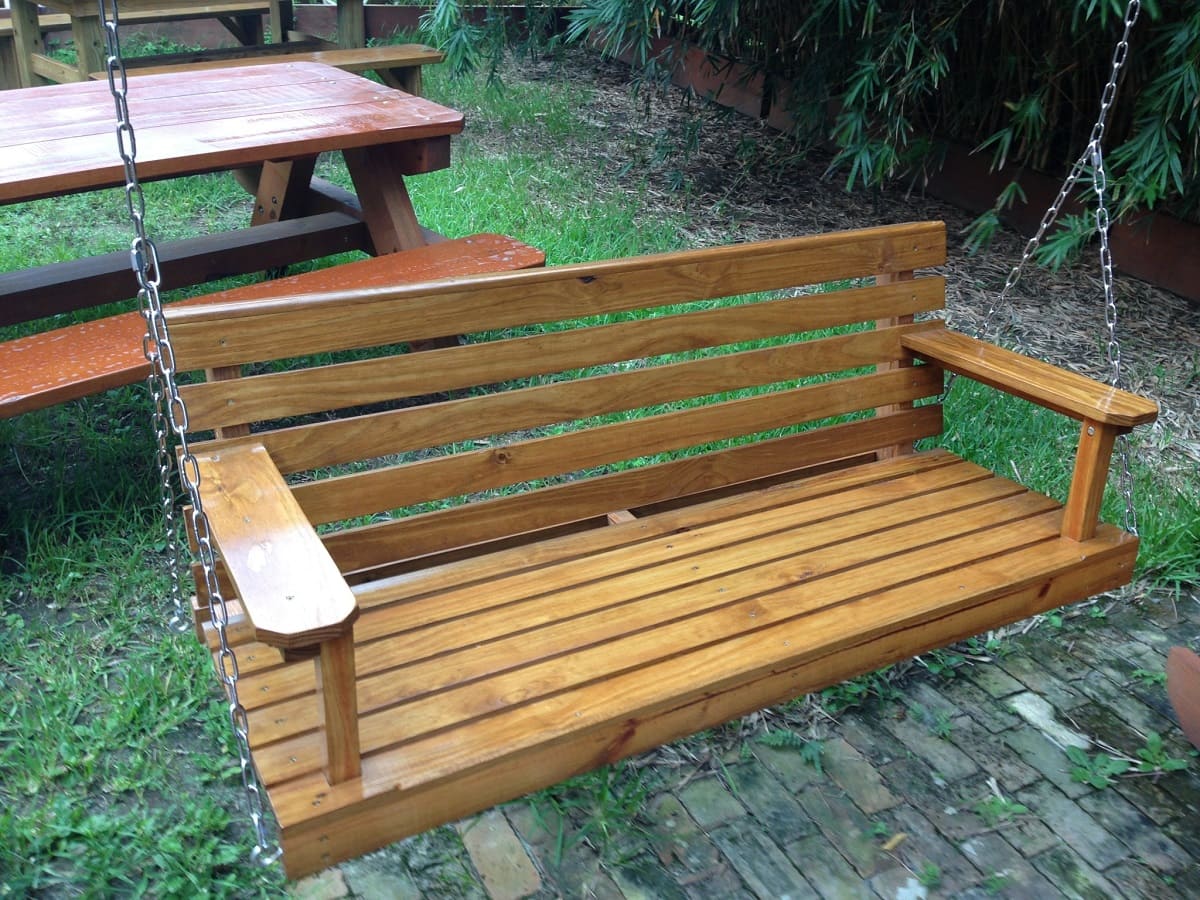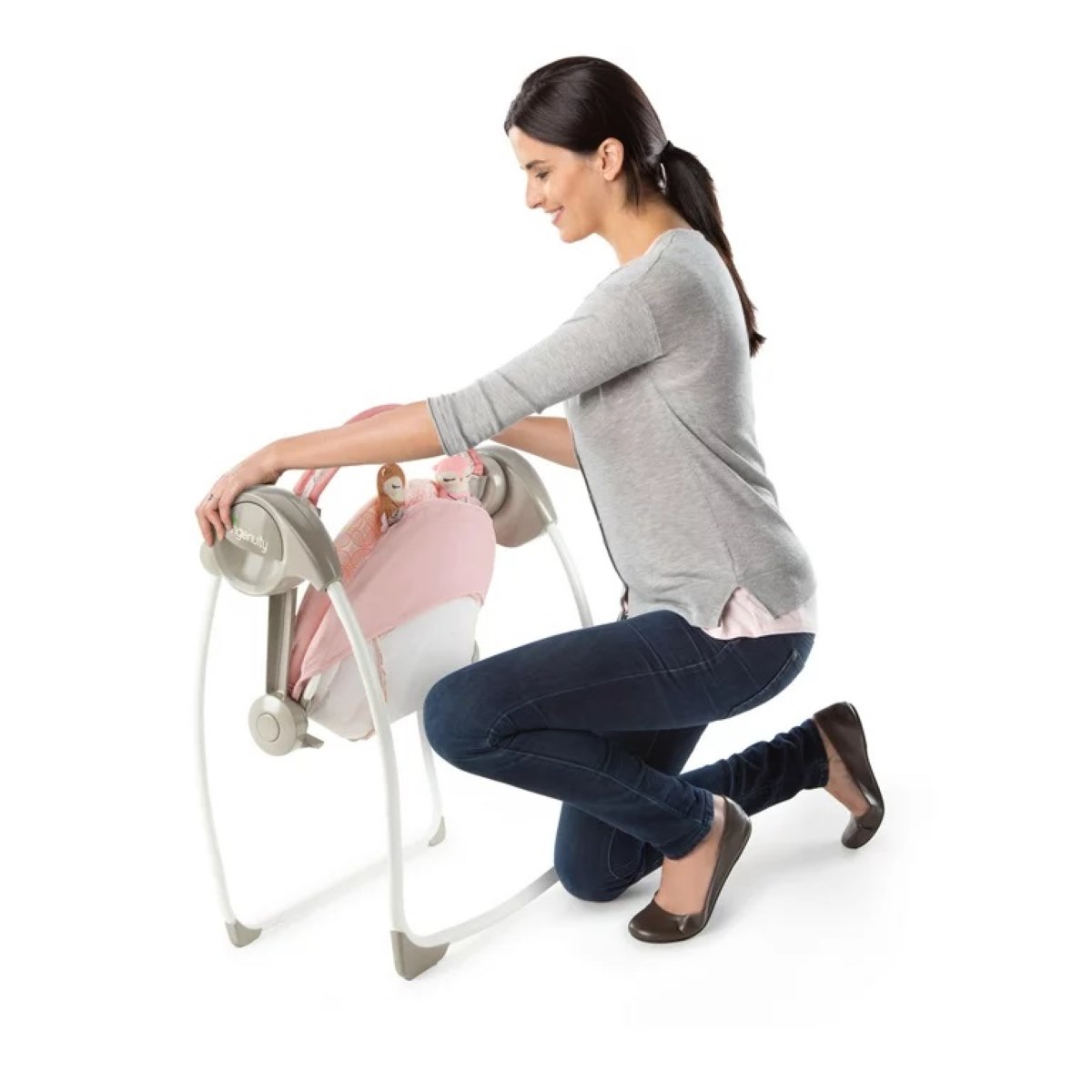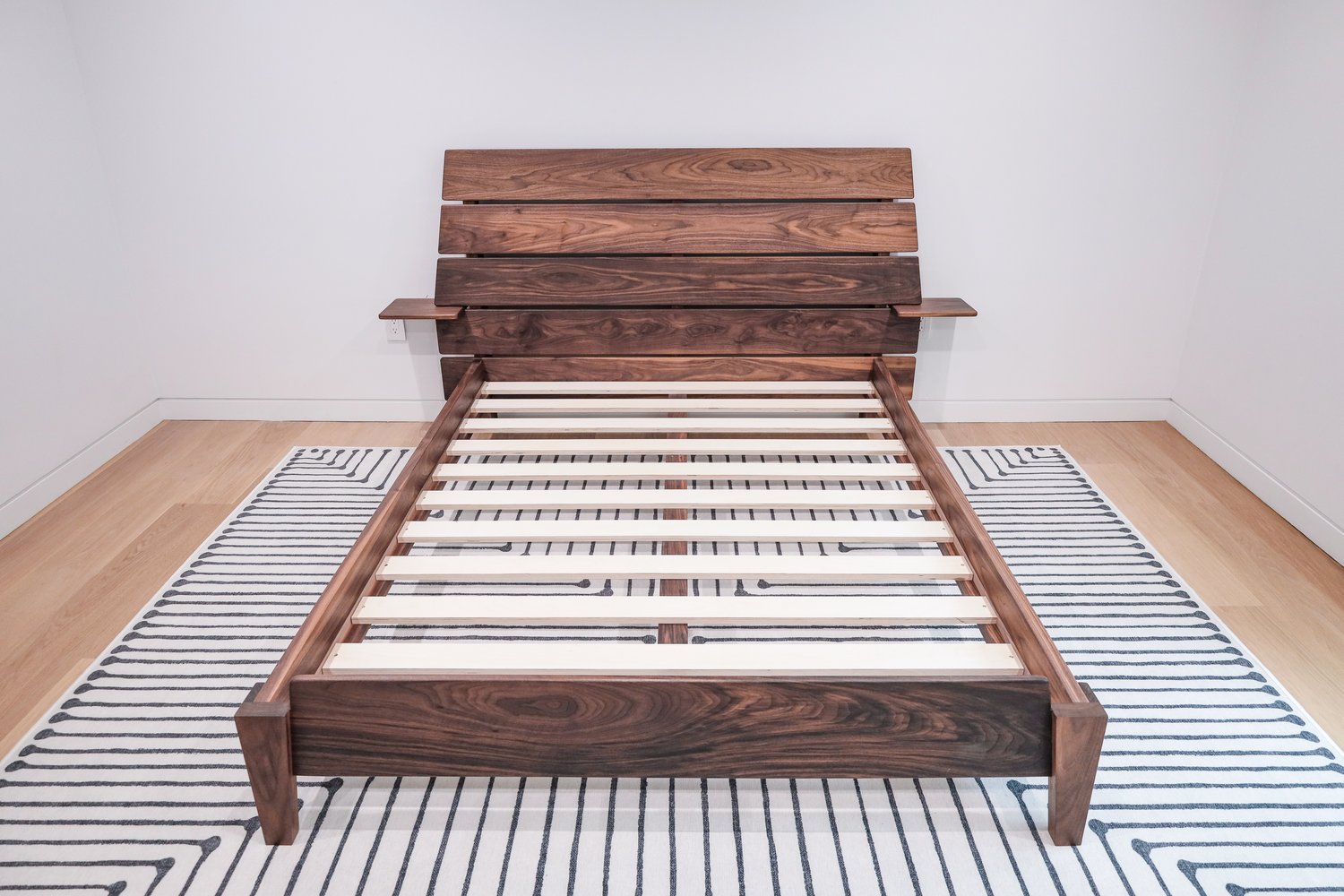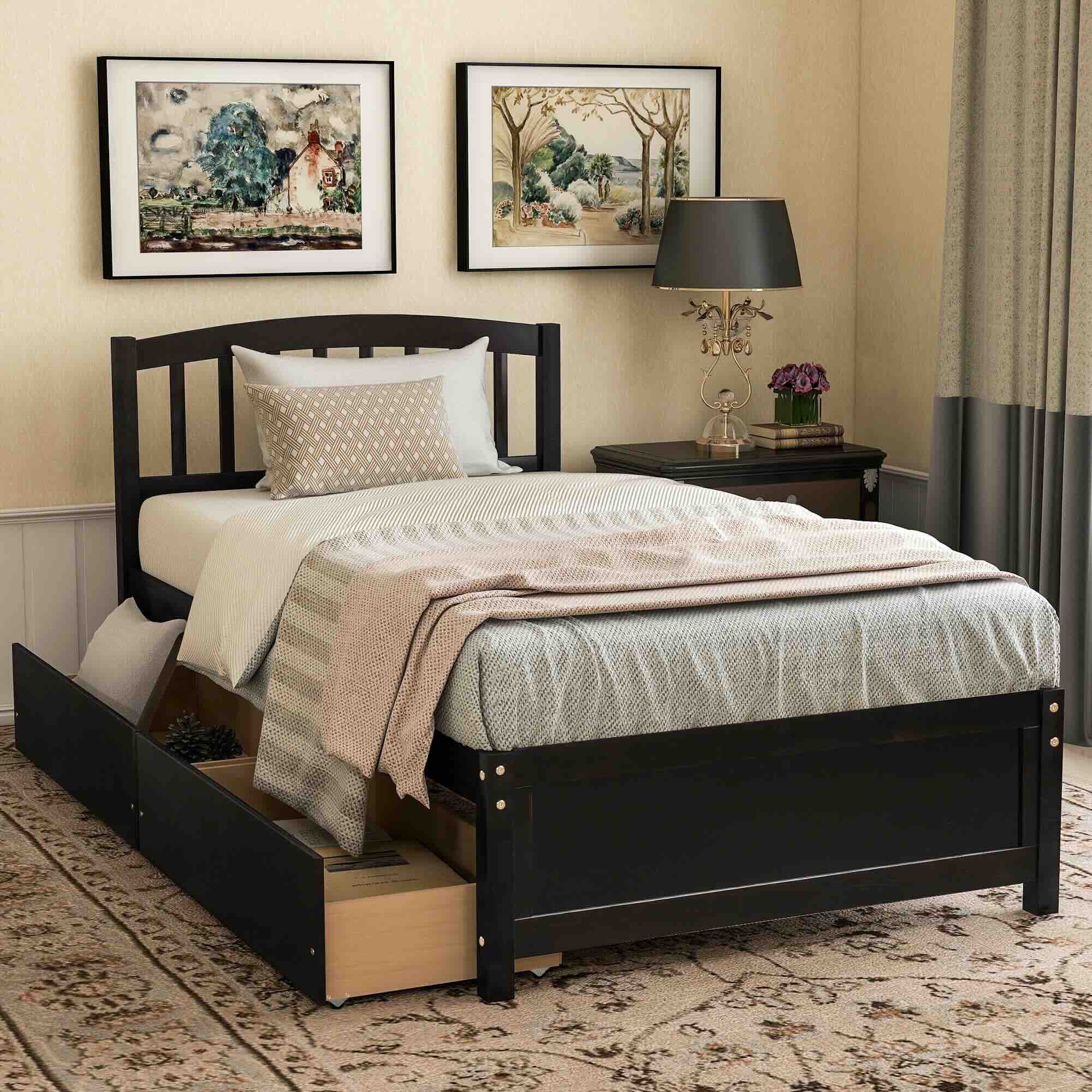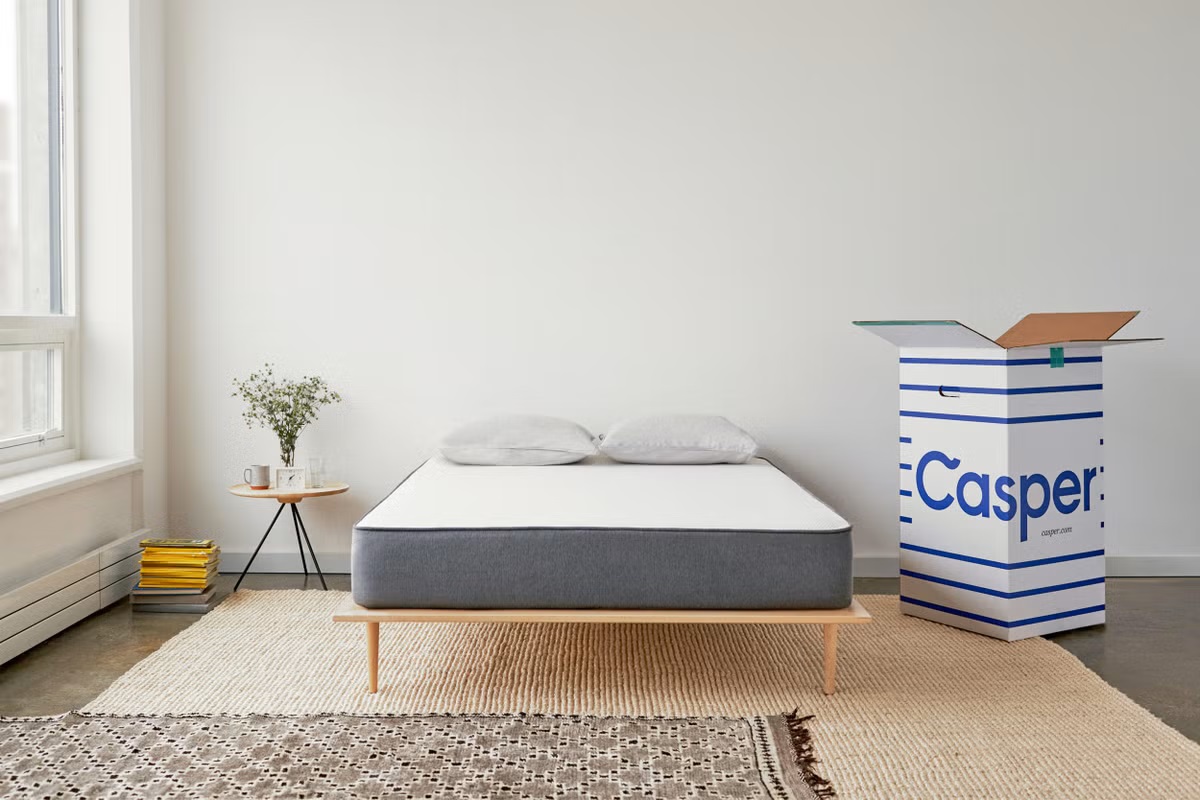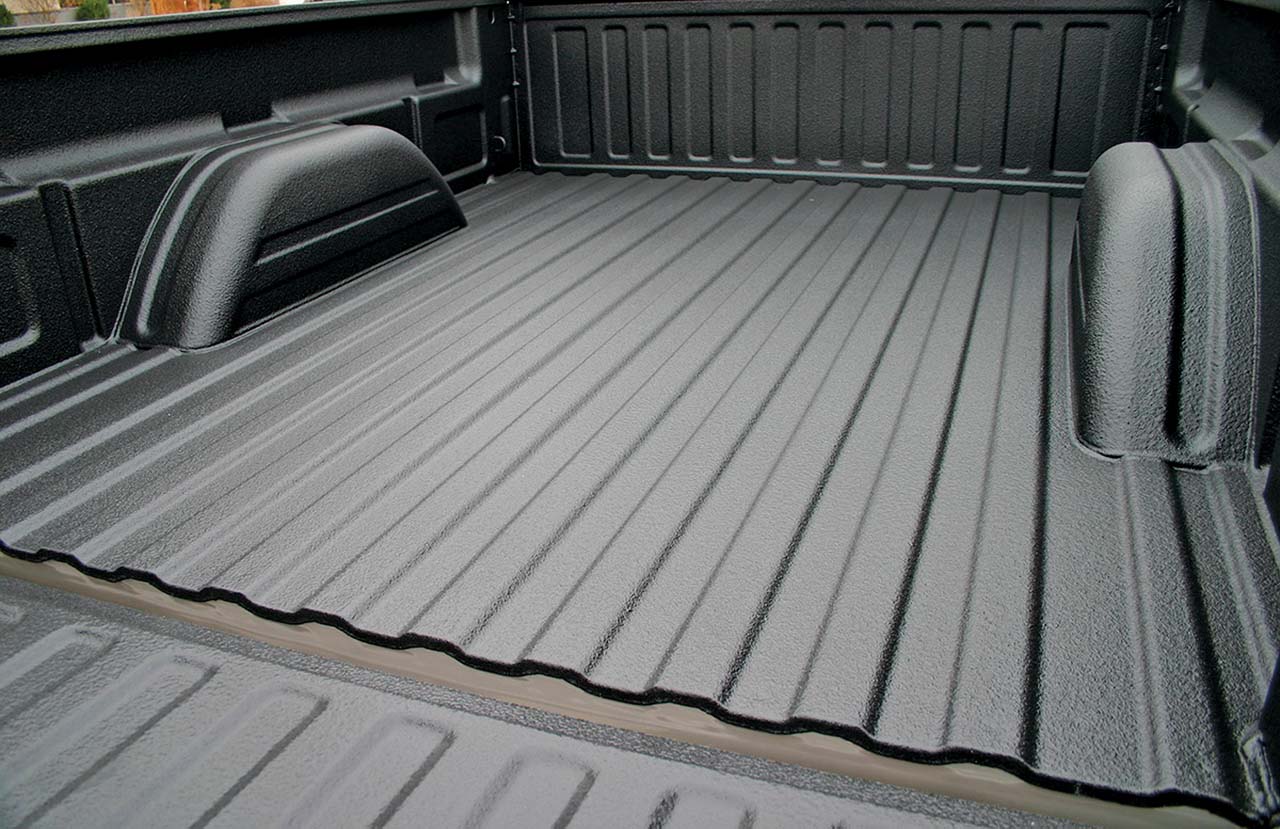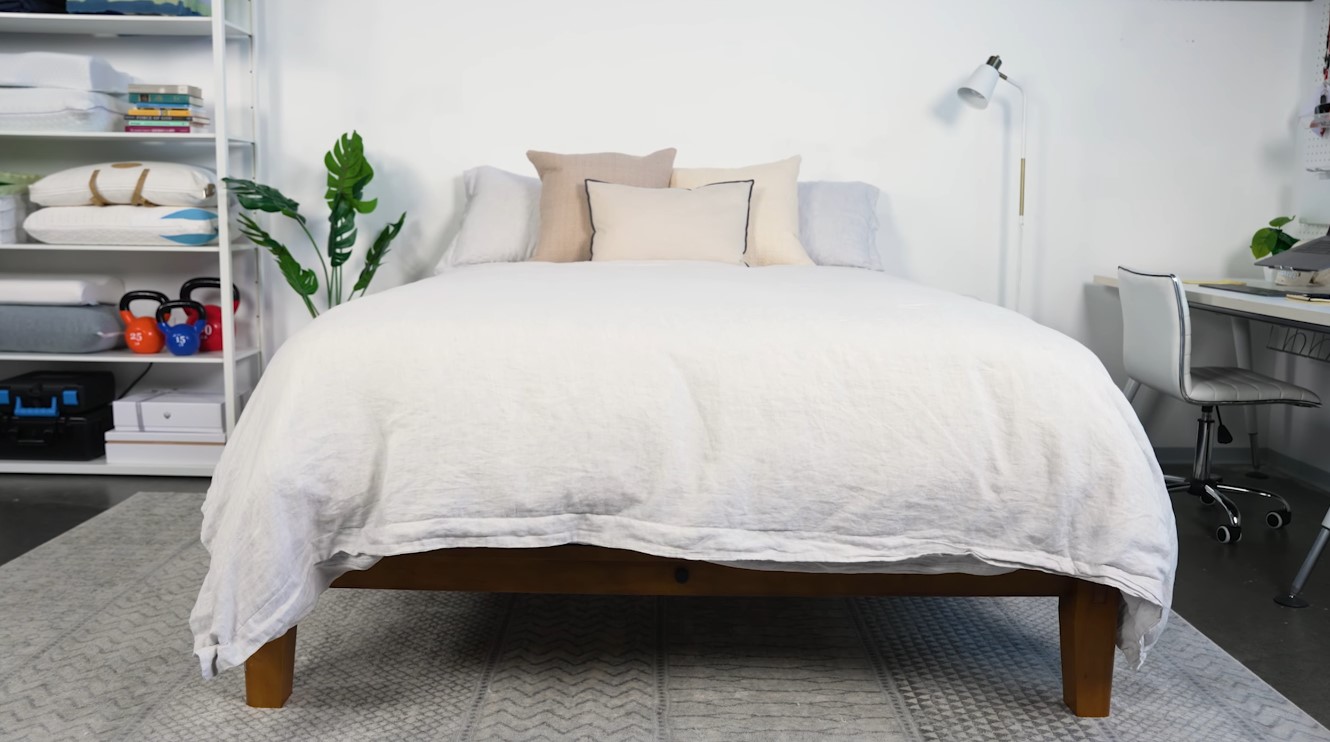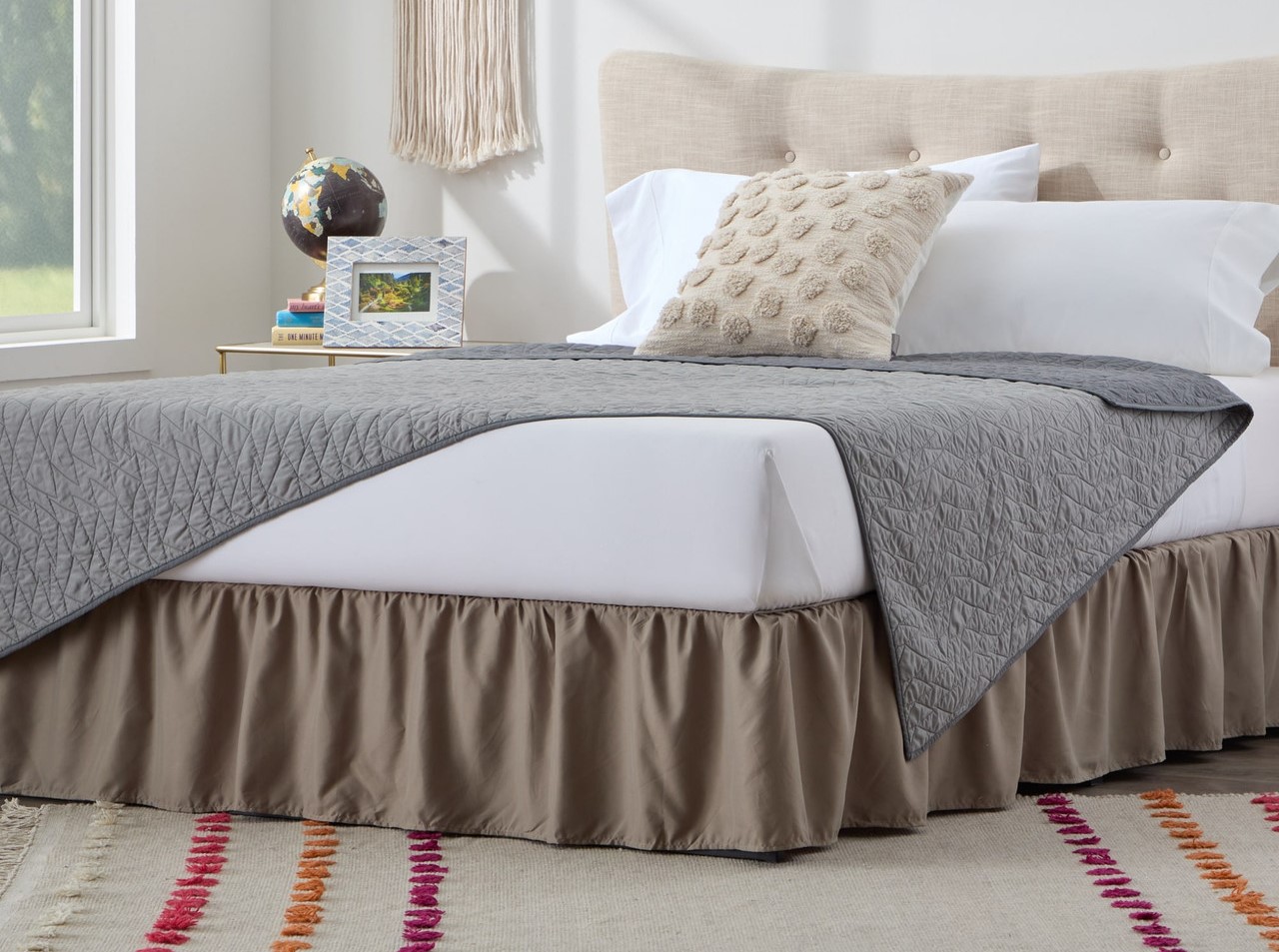Home>Furniture>Bedroom Furniture>What Is A Swing Bed
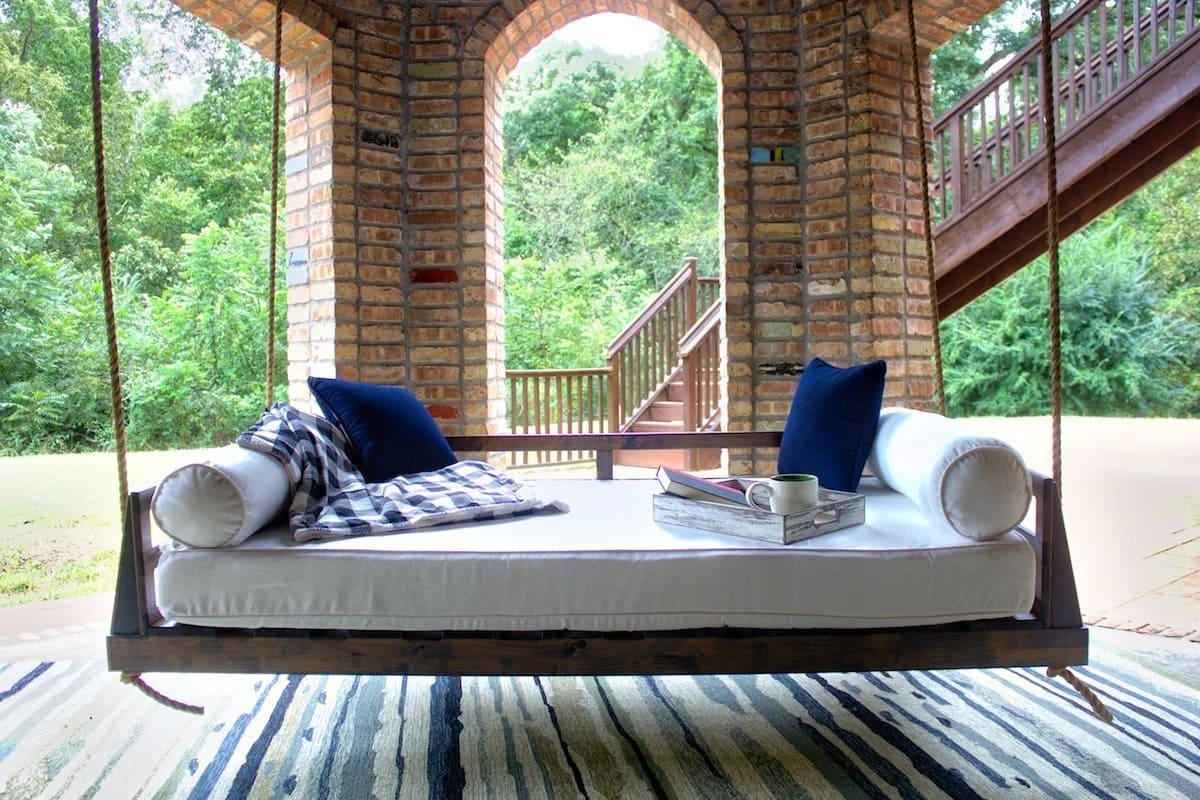

Bedroom Furniture
What Is A Swing Bed
Modified: January 9, 2024
Discover the versatility of bedroom furniture with a swing bed. Transform your space into a cozy retreat with our wide selection of stylish, comfortable swing beds.
(Many of the links in this article redirect to a specific reviewed product. Your purchase of these products through affiliate links helps to generate commission for Storables.com, at no extra cost. Learn more)
Introduction
Welcome to our comprehensive guide on swing beds, a popular choice in the realm of bedroom furniture. A swing bed not only enhances the aesthetic appeal of your bedroom but also provides comfort and relaxation, ensuring a cozy and rejuvenating sleep experience. In this article, we will explore the various aspects of swing beds, including their definition, purpose, eligibility, services provided, benefits, and more.
Swing beds offer a unique combination of style, functionality, and comfort. These beds are designed with a suspended mattress or a swinging mechanism that allows for gentle rocking motion. As you unwind and settle in for the night, the subtle sway of the swing bed can soothe your senses, helping you drift off into a peaceful slumber. Whether you prefer a modern, minimalist design or a classic, ornately crafted frame, swing beds come in a variety of styles to suit your personal taste and bedroom decor.
Swing beds are not just meant for sleeping; they can also serve as versatile seating or lounging options during the day. Whether you want to curl up with a good book, enjoy a leisurely afternoon nap, or simply relax and unwind, swing beds offer a cozy and inviting space where you can do it all. With their unique design and functionality, swing beds add a touch of charm and elegance to any bedroom.
Key Takeaways:
- Swing beds offer a unique blend of style and relaxation, making them a popular choice for bedroom furniture. Understanding the eligibility criteria and services provided in swing bed facilities is crucial for those considering this type of care.
- When choosing a swing bed facility, it is vital to consider factors such as location, reputation, staffing, services and rehabilitation programs, facility amenities, visitation policies, insurance coverage, and feedback from others.
Read more: How To Make A Trampoline Swing Bed
Definition of a Swing Bed
A swing bed, sometimes referred to as a hanging bed or suspended bed, is a type of furniture that combines the comfort of a traditional bed with the unique feature of a swinging or rocking motion. Unlike a standard bed that is fixed to the floor or a bed frame, swing beds are typically suspended from the ceiling or supported by a sturdy frame.
Swing beds come in various designs and styles, ranging from simple and minimalistic to ornate and decorative. They can be made of different materials, such as wood, metal, or even rope, depending on the desired aesthetic and functionality. Some swing beds are attached to a stationary base, allowing for controlled swinging motion, while others are hung by ropes or chains, providing a more free-flowing and fluid movement.
The size of a swing bed can vary, just like traditional beds. They are available in single, twin, double, queen, and king sizes, catering to different sleeping preferences and room dimensions. The mattress used in a swing bed is typically similar in size to that of a standard bed and can be customized to meet individual comfort and support requirements.
The beauty of a swing bed lies in its ability to create a unique and relaxing experience. The gentle rocking motion of the bed provides a soothing sensation, mimicking the feeling of being gently cradled or swayed, which can contribute to a better quality of sleep. This motion can also be enjoyed during waking hours by using the swing bed as a comfortable spot for reading, lounging, or simply unwinding after a long day.
Overall, a swing bed is a versatile and visually striking piece of furniture that offers both comfort and functionality. It not only adds a whimsical and stylish touch to any bedroom but also provides a tranquil and cozy space for relaxation and rejuvenation.
Purpose of a Swing Bed
The purpose of a swing bed extends beyond its aesthetic appeal and unique rocking motion. Swing beds serve several practical and functional purposes, making them a desirable addition to any bedroom. Let’s explore the main reasons why people choose to incorporate swing beds into their sleeping and lounging spaces:
- Enhanced Relaxation: One of the primary purposes of a swing bed is to provide an enhanced level of relaxation. The gentle rocking motion of the bed can help alleviate stress and tension, promoting a sense of calm and tranquility. Whether you’re looking to unwind after a long day or create a serene atmosphere for meditation or yoga, a swing bed can be a perfect solution.
- Improved Sleep Quality: The rocking motion of a swing bed has been known to improve sleep quality. The rhythmic movement can lull you into a deeper and more restful sleep, reducing tossing and turning throughout the night. This can be particularly beneficial for individuals who struggle with insomnia or sleep disorders.
- Versatility: Swing beds are not solely intended for sleeping. They offer a versatile space for various activities, such as reading, lounging, or even working from home. You can transform your swing bed into a cozy retreat where you can indulge in your favorite pastimes or simply relax and recharge.
- Aesthetics: Swing beds are visually striking and can instantly elevate the overall aesthetics of a bedroom. They come in a wide range of designs, materials, and finishes, allowing you to find the perfect match for your personal style and existing decor. Whether you prefer a rustic, bohemian look or a modern, sleek design, a swing bed can add a touch of elegance and charm to your space.
- Space Saving: Swing beds can be an excellent solution for those who are short on space or live in smaller homes or apartments. Since they are suspended and don’t require a traditional bed frame, swing beds can free up floor space and create a more open and airy feel in a bedroom. This makes them particularly popular in urban environments or bedrooms with limited square footage.
Overall, the purpose of a swing bed goes beyond its functional use of providing a comfortable sleeping surface. It offers a visually appealing, versatile, and relaxation-inducing space that can enhance the overall ambiance and functionality of a bedroom.
Eligibility for Swing Bed Care
Swing bed care is a specialized form of care provided in certain healthcare facilities, typically hospitals, that combines the services of a skilled nursing facility and an acute care hospital. It is designed for individuals who have had an acute illness, injury, or surgery and no longer require the intense level of care provided in a hospital but still need additional medical supervision and rehabilitation before they can safely return home.
The eligibility criteria for swing bed care can vary depending on the specific facility and the level of care required. Generally, the following factors are considered in determining eligibility:
- Medical Stability: To be eligible for swing bed care, individuals must be medically stable, meaning their condition no longer requires acute care services or intensive monitoring typically provided in a hospital setting. This may include stabilizing vital signs, wound healing, and the ability to manage medication and basic activities of daily living.
- Rehabilitation Needs: Swing bed care is often utilized for individuals who require additional rehabilitative therapies to regain strength, mobility, and independence. This may include physical therapy, occupational therapy, speech therapy, or other specialized rehabilitation services. Eligibility for swing bed care may depend on the need for ongoing therapy and the potential for improvement in functional abilities.
- Expected Length of Stay: Swing bed care is intended to be a short-term care option rather than long-term placement. Eligibility may be determined based on the expected length of stay, typically ranging from a few weeks to a few months. The individual’s progress and ability to make significant improvements in their health and functional status during this time period are considered when determining eligibility.
- Discharge Planning: Eligibility for swing bed care may also require a thorough assessment of the individual’s discharge needs and the availability of appropriate support services upon returning home. This may include evaluating the individual’s living situation, caregiver support, and the ability to safely manage care and activities of daily living outside of the swing bed facility.
- Insurance Coverage: The availability of swing bed care and eligibility for this type of care may also be influenced by insurance coverage, including Medicare, Medicaid, or private insurance. It is important to check with the specific facility and the individual’s insurance provider to understand coverage and eligibility requirements.
It is important to note that eligibility for swing bed care is assessed on an individual basis, taking into consideration a variety of factors related to the individual’s medical condition, care needs, and available resources. Healthcare professionals, such as case managers or social workers, can assist in evaluating eligibility and facilitating the process of accessing swing bed care.
Services provided in a Swing Bed
In a swing bed facility, various services are provided to meet the unique needs of individuals who require a combination of medical supervision, rehabilitation, and supportive care. These services are aimed at promoting recovery, improving functional abilities, and preparing individuals for a safe return home. Let’s explore some of the key services typically offered in a swing bed facility:
- Skilled Nursing Care: Swing bed facilities provide skilled nursing care, which includes monitoring vital signs, administering medications, managing chronic medical conditions, and ensuring overall patient well-being. Registered nurses and licensed practical nurses are responsible for coordinating and providing the necessary medical care and attention.
- Rehabilitation Therapies: Swing bed facilities offer various rehabilitation services tailored to individual needs. This may include physical therapy, occupational therapy, and speech therapy. These therapies aim to improve strength, mobility, coordination, and communication skills to enhance independence and functional abilities.
- Pain Management: Many swing bed facilities have pain management programs in place. These programs focus on assessing and addressing any pain or discomfort experienced by individuals through the use of medications, non-pharmacological interventions, and therapeutic techniques to improve overall comfort and quality of life.
- Wound Care: For individuals with wounds requiring specialized care and treatment, swing bed facilities provide wound care services. This includes assessments, dressing changes, infection prevention, and education on wound management to promote healing and reduce the risk of complications.
- Medication Management: Swing bed facilities have trained healthcare professionals who oversee medication management. This ensures that medications are properly administered, monitored for effectiveness, and adjusted as needed. Education on medication management and potential side effects is also provided to patients and their caregivers.
- Activities of Daily Living (ADL) Support: Swing bed facilities assist individuals with activities of daily living, including bathing, dressing, grooming, mobility, and toileting. Occupational therapists may provide training and adaptive equipment to maximize independence and improve self-care abilities.
- Emotional and Social Support: Emotional and social support is an essential part of swing bed care. Social workers, psychologists, or counselors may be available to provide counseling services, address emotional needs, and assist with care transitions. Additionally, recreational activities and socialization opportunities are often provided to promote overall well-being.
- Dietary Services: Swing bed facilities have dietary services to ensure individuals receive appropriate nutrition during their stay. Registered dietitians or nutritionists assess nutritional needs and develop personalized meal plans. This may include specialized diets, modified texture diets, or dietary adjustments to support recovery and overall health.
The specific services offered in a swing bed facility may vary depending on the organization’s resources, staff qualifications, and individual care plans. It is important to discuss and clarify the services available before choosing a swing bed facility.
A swing bed is a type of hospital bed that can be used for either acute care or skilled nursing care, providing flexibility for patients’ needs. It can be a cost-effective option for hospitals and can help with patient flow and bed availability.
Read more: How To Make A Porch Swing Bed
Benefits of Swing Bed Care
Swing bed care offers a range of benefits for individuals who require a transitional level of care between a hospital and returning home. This form of care combines the advantages of skilled nursing facilities and acute care hospitals to provide comprehensive medical supervision, rehabilitation, and support. Let’s explore some of the key benefits of swing bed care:
- Continuity of Care: Swing bed care allows individuals to receive continued medical care and rehabilitation services in a familiar and comfortable setting. This ensures a smooth transition from acute care hospitalization to a lower level of care while maintaining a consistent care team and treatment plan.
- Comprehensive Rehabilitation: Swing bed facilities provide specialized rehabilitation programs designed to improve functional abilities and promote recovery. Physical therapy, occupational therapy, and speech therapy services are available to help individuals regain strength, mobility, and independence, allowing them to return home with enhanced abilities.
- Cost-Effective Option: Swing bed care can be a cost-effective alternative to prolonged hospital stays or long-term skilled nursing facility placement. It offers a more affordable option for individuals who require ongoing medical supervision and rehabilitation but no longer need the intensive care provided in a hospital setting.
- Personalized Care Plans: Swing bed care is tailored to the unique needs and goals of each individual. Care plans are developed in collaboration with the individual, their family, and a multidisciplinary team of healthcare professionals. This personalized approach ensures that care is focused on individual needs, preferences, and desired outcomes.
- Improved Outcomes: The comprehensive care and rehabilitation services provided in swing bed facilities contribute to improved health outcomes. This may include faster recovery, increased functional abilities, better pain management, and a reduced risk of complications. The supportive environment helps individuals regain independence and achieve their optimal level of functioning.
- Transitional Support: Swing bed care offers support and guidance during the transition from hospital to home. Social workers and care coordinators assist with discharge planning, arranging for necessary home modifications or equipment, and connecting individuals with community resources and support services to ensure a smooth and successful transition.
- Respite for Caregivers: Swing bed care can provide much-needed respite for family caregivers who may have been providing round-the-clock care during the acute phase of an illness or injury. This allows caregivers to take a break, recharge, and focus on their own well-being while knowing that their loved one is receiving skilled care and rehabilitation services.
Overall, swing bed care offers numerous benefits, including continuity of care, comprehensive rehabilitation, cost-effectiveness, personalized care plans, improved outcomes, transitional support, and respite for caregivers. It is a valuable option for individuals requiring post-acute care and rehabilitation before returning home.
Difference between Swing Bed and Skilled Nursing Facility
Swing beds and skilled nursing facilities are both important components of the healthcare system, providing care and support for individuals who require additional medical supervision and rehabilitation. While they share similarities, there are distinct differences between the two. Let’s explore the key differences between swing beds and skilled nursing facilities:
- Setting: Swing beds are typically located within a hospital setting, allowing individuals to receive care in a familiar environment. In contrast, skilled nursing facilities are separate facilities designed specifically to provide long-term or short-term nursing care and rehabilitation services.
- Level of Care: Swing beds offer a transitional level of care between a hospital and returning home. They provide a combination of skilled nursing care and rehabilitative therapies to individuals who are no longer in need of acute care but still require ongoing medical supervision and rehabilitation. Skilled nursing facilities, on the other hand, focus on providing long-term care or short-term rehabilitation to individuals who have more stable medical conditions or require extended assistance with daily activities.
- Duration of Stay: Swing bed care is intended to be a short-term solution, typically ranging from a few weeks to a few months. It is a time-limited form of care aimed at helping individuals regain their functional abilities and prepare for a safe return home. Skilled nursing facility care, on the other hand, can be more long-term, providing ongoing nursing care and support for individuals who are unable to live independently or require extended rehabilitation.
- Services Provided: Both swing beds and skilled nursing facilities offer medical supervision, rehabilitation services, and assistance with activities of daily living. However, swing beds often provide a more intensive level of care, including therapies such as physical therapy, occupational therapy, and speech therapy, specifically aimed at improving functional abilities. Skilled nursing facilities, in addition to nursing care, generally offer more extensive support services, including assistance with personal care, medication management, and social activities.
- Purpose: The primary purpose of swing beds is to bridge the gap between hospital care and returning home, providing a focused period of rehabilitation and medical supervision. Skilled nursing facilities, on the other hand, are intended for individuals who require more long-term care due to chronic illnesses, disabilities, or the need for extensive rehabilitation.
- Insurance Coverage: Swing bed care is often covered by Medicare, Medicaid, or private insurance, similar to hospital care. Skilled nursing facility care, on the other hand, may have different insurance coverage requirements, and individuals may need to meet specific criteria to be eligible for coverage under their insurance plans.
It is important to carefully assess your individual needs and consult with healthcare professionals to determine whether swing bed care or skilled nursing facility care is the most appropriate option for your specific situation. Factors such as the nature of your condition, expected duration of care, long-term care requirements, and insurance coverage should be considered when making a decision.
Medicare Coverage for Swing Bed Care
Medicare, the federal health insurance program primarily for individuals aged 65 and older, covers a range of healthcare services, including swing bed care. Medicare provides coverage for swing bed care under certain conditions, allowing eligible individuals to receive the necessary medical supervision and rehabilitation services in a swing bed facility. Let’s explore the key aspects of Medicare coverage for swing bed care:
Eligibility:
In order to be eligible for Medicare coverage for swing bed care, individuals must meet specific criteria:
- Have a Medicare Part A (hospital insurance) coverage.
- Have a qualifying hospital stay of at least three consecutive days. This means the individual has been admitted to a hospital as an inpatient for a minimum of three days, not counting the day of discharge.
- Require skilled care, such as skilled nursing care or rehabilitation therapies, that can be provided in a swing bed facility.
- Have a need for daily medical management and monitoring that cannot be provided in a less intensive care setting.
Duration of Coverage:
Medicare coverage for swing bed care has specific time limits:
- First 20 days: Medicare covers the full cost of swing bed care for the first 20 days after a qualifying hospital stay if the individual meets all the eligibility requirements. During this period, Medicare pays for all eligible services.
- Day 21 to Day 100: Starting from day 21, there may be a daily coinsurance amount that the individual is responsible for. Medicare covers a portion of the swing bed care costs up to day 100. The individual is responsible for paying the daily coinsurance amount during this period.
- After Day 100: Medicare coverage for swing bed care ends after day 100 of the benefit period.
Covered Services:
Medicare covers various services provided during swing bed care:
- Skilled nursing care: Medicare covers skilled nursing care services provided by registered nurses, licensed practical nurses, and certified nursing assistants.
- Rehabilitation services: This includes therapies such as physical therapy, occupational therapy, and speech therapy, aimed at improving functional abilities and promoting rehabilitation.
- Medications and medical supplies: Medicare covers necessary medications and medical supplies related to the individual’s care during their stay in a swing bed facility.
- Diagnostic tests and treatments: Medicare also covers medically necessary diagnostic tests and treatments that are required for the individual’s condition and care plan.
Beneficiary Costs:
While Medicare covers a significant portion of swing bed care costs, there are still potential out-of-pocket expenses for individuals:
- Medicare Part A deductible: The individual is responsible for paying the deductible amount before Medicare coverage begins.
- Daily coinsurance: After the initial 20-day period, the individual may be responsible for paying a daily coinsurance amount for swing bed care services.
It is important to note that Medicare coverage for swing bed care is based on specific eligibility criteria and time limits. It is essential to consult with healthcare professionals and review the Medicare guidelines to determine individual eligibility and coverage for swing bed care.
How to Choose a Swing Bed Facility
Choosing the right swing bed facility is crucial to ensure that you or your loved one receives the best possible care and support during the transitional period of recovery. Here are some factors to consider when selecting a swing bed facility:
- Location: Consider the location of the swing bed facility. Opt for a facility that is close to your home or the home of your loved one to make it easier for family and friends to visit. Being closer to familiar surroundings can also contribute to a smoother transition and a sense of comfort.
- Reputation and Accreditation: Research the reputation of the swing bed facility. Look for facilities that are accredited by recognized organizations such as The Joint Commission or the Commission on Accreditation of Rehabilitation Facilities (CARF). These accreditations indicate that the facility meets certain quality standards and demonstrates a commitment to providing excellent care.
- Staffing: Inquire about the qualifications and experience of the swing bed facility’s staff. Ensure that there are skilled and licensed healthcare professionals, such as registered nurses and therapists, available to provide the necessary care and rehabilitation services. A facility with a dedicated and knowledgeable staff will contribute to better outcomes and a higher quality of care.
- Services and Rehabilitation Programs: Evaluate the range of services and rehabilitation programs offered by the swing bed facility. Ensure that they align with the specific needs and goals of the individual seeking care. Look for facilities that provide comprehensive, individualized care plans that address not only medical needs but also rehabilitation, pain management, wound care, and activities of daily living.
- Facility Amenities: Consider the amenities and environment of the swing bed facility. Look for facilities that offer comfortable and well-maintained rooms, common areas for socialization, outdoor spaces, and amenities that contribute to a positive and supportive atmosphere. A pleasant and inviting environment can greatly enhance the overall experience and well-being of the individual.
- Visitation Policy: Ask about the visitation policy of the swing bed facility. Ensure that the facility allows ample visitation hours and supports family involvement in the care process. The ability to visit and spend time with loved ones can significantly impact the individual’s emotional well-being and recovery.
- Insurance Coverage: Understand the insurance coverage options accepted by the swing bed facility. Inquire whether the facility accepts Medicare, Medicaid, or private insurance and the specific coverage details. This will help ensure that the cost of swing bed care is manageable and within your budget.
- Reviews and Recommendations: Read reviews and seek recommendations from others who have had experience with swing bed facilities. Hearing about first-hand experiences and feedback from others can provide valuable insights and help inform your decision-making process.
- Tour the Facility: Schedule a visit to the swing bed facility whenever possible. Take a tour, observe the cleanliness, interact with staff members, and ask questions. Seeing the facility firsthand can help you assess the overall atmosphere and determine if it aligns with your expectations and the needs of the individual seeking care.
Choosing a swing bed facility involves careful consideration of various factors to ensure that the facility can meet the individual’s specific needs and provide the best possible care and support. Take the time to research, ask questions, and gather information to make an informed decision that will contribute to a successful recovery and transition back home.
Read more: What Is A Bed
Conclusion
Swing beds offer a unique and stylish addition to any bedroom, providing both comfort and aesthetic appeal. Understanding the various aspects of swing beds, including their definition, purpose, eligibility criteria, services provided, and Medicare coverage, is essential for anyone considering this type of bedroom furniture. By choosing a swing bed facility that meets the individual’s needs and preferences, individuals can receive the necessary care and support during their transitional period of recovery.
Swing beds provide a range of benefits, including enhanced relaxation, improved sleep quality, versatility, aesthetics, and space-saving attributes. They can be an excellent choice for those looking to create a cozy and inviting space for sleep, relaxation, and other activities.
Swing bed care, offered in specific healthcare facilities, is designed for individuals who no longer require acute hospital care but still need medical supervision and rehabilitation before they can return home. Medicare coverage is available for swing bed care, but meeting specific eligibility criteria and adhering to the coverage limitations is important.
When choosing a swing bed facility, it is vital to consider factors such as location, reputation, staffing, services and rehabilitation programs, facility amenities, visitation policies, insurance coverage, and feedback from others. Taking the time to research and visit different facilities will ensure that the chosen facility aligns with individual needs and provides a supportive and comfortable environment for recovery.
In conclusion, swing beds offer a unique blend of style and relaxation, making them a popular choice for bedroom furniture. Understanding the eligibility criteria and services provided in swing bed facilities, as well as the intricacies of Medicare coverage, is crucial for those considering this type of care. By choosing a swing bed facility that meets individual needs, individuals can experience a smooth transition, receive comprehensive care, and pave the way for a successful recovery.
Frequently Asked Questions about What Is A Swing Bed
Was this page helpful?
At Storables.com, we guarantee accurate and reliable information. Our content, validated by Expert Board Contributors, is crafted following stringent Editorial Policies. We're committed to providing you with well-researched, expert-backed insights for all your informational needs.
